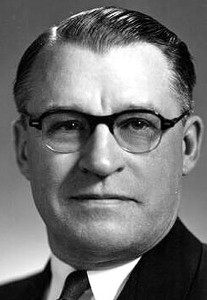-
(b.) -1903(d.)1983
Bio/Description
A 1967 IBM Fellow, he joined IBM in 1920 as an engineering draftsman in Endicott, N.Y., his significant technical contributions include accounting machine developments in the IBM 285 and 297 series - better known as the Type III and Type IV machines. Features of these machines, particularly the data transfer apparatus, were the basis for later electromechanical calculators of many types. He and James Bryce, at the request of Thomas J. Watson, built for Columbia Professor Ben Wood, a machine more suited to the needs of statistics than business. They built a gigantic tabulator capable of accumulating sums of squares, raising numbers to powers, and so forth by means of direct subtraction (the first punched-card machine to do this) plus a novel system of ten paired accumulators. The new machine "mass-produced the sums of products by the method of progressive digiting and read punch cards at the rate of 150 per minute. It contained ten 10-position counters with provision for shifting totals internally from one counter to another ? a capability that anticipated a future function of computers". The new machine, variously called the "Columbia Machine", the "Statistical Calculator", the "Difference Tabulator", and (because of its massive size) the "Packard", was delivered and installed in 1931. They invented and developed a series of automatic multiplying machines known as Types 600 and 601. He was also primarily responsible for the model 602A; the last and most flexible of IBM's electromechanical calculators. His other contributions included invoice tabulators, an interpreting reproducer and the unique card reader employed in the Type 407 alphabetical accounting machine. In 1940, he was named Senior Engineer, and for three years during World War II, he developed equipment for the U.S. armed forces. In 1955, he organized the first patent engineering function, which became the model for similar groups throughout IBM. He was appointed Director of General Products Division Patent Engineering in 1963, and in 1965 was named Manager of Patent Engineering in the newly formed Systems Development Division. After 78 patents relating to IBM products and 47 years of service, he was named an IBM Fellow in 1967, the highest honor a scientist, engineer, or programmer at IBM can achieve. He retired later that year and died in 1983.
-
Date of Birth:
1903 -
Date of Death:
1983 -
Noted For:
Co-developer of the IBM 285 and 297 series accounting machines (aka Type III and Type IV) and co-inventor of a series of automatic multiplying machines known as Type 600 and 601 -
Category of Achievement:
-
More Info:


